The mystery of the ancient temple standing tall in the middle of the longest river in China
Thanks to its delicate and sturdy design, the temple in the middle of the longest river in China still stands firm despite suffering countless floods over the past hundreds of years.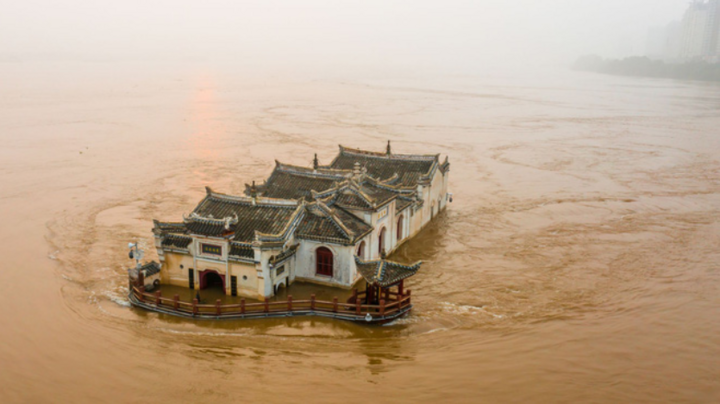 Guan Yin Pavilion, also known as Long Ban Temple, is a temple located in the middle of the Yangtze River flowing through Ec Chau city in Hubei province (China). This is considered one of the sturdiest structures in China as it has remained standing amidst the fast-flowing waters of the country's longest river for more than 700 years.
Guan Yin Pavilion, also known as Long Ban Temple, is a temple located in the middle of the Yangtze River flowing through Ec Chau city in Hubei province (China). This is considered one of the sturdiest structures in China as it has remained standing amidst the fast-flowing waters of the country's longest river for more than 700 years.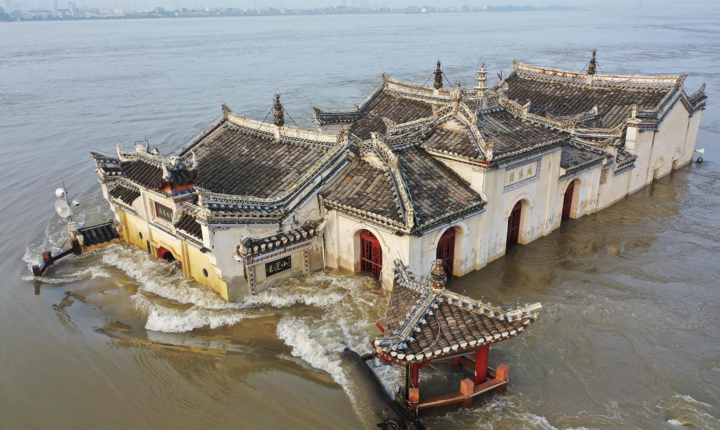 According to records, the predecessor of Avalokiteśvara was a Bodhisattva temple in the middle of the Truong Giang River built in the Song Dynasty and upgraded and repaired for the first time in the 5th year of the Yuan Dynasty (1345).
According to records, the predecessor of Avalokiteśvara was a Bodhisattva temple in the middle of the Truong Giang River built in the Song Dynasty and upgraded and repaired for the first time in the 5th year of the Yuan Dynasty (1345).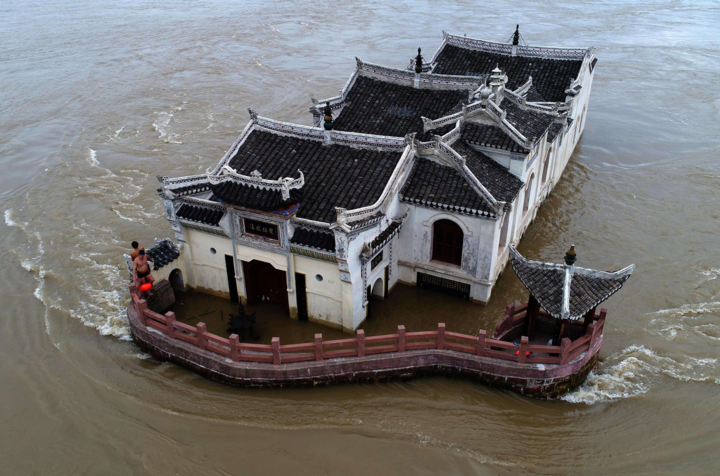
The pagoda was completely destroyed in the sixth year of Gia Tinh of the Ming Dynasty (1527), then was rebuilt on a larger scale by Hua Sac Khanh district command, with the addition of Quan Am communal house and Thuan Duong pavilion. The pagoda was once again repaired and reinforced in the 3rd year of Dongzhi of the Qing Dynasty (1864) and exists to this day.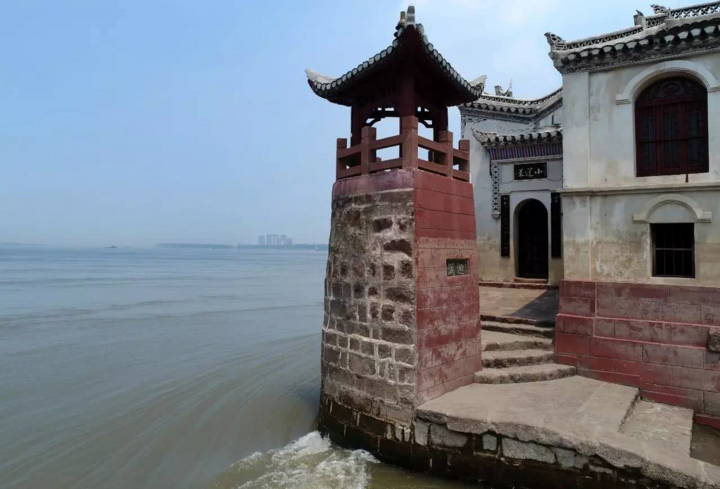 The temple is 300 m2 wide with a length of 24 m, a width of 10 m and a height of 14 m, including 2 main floors with many small doors painted white and a tiled roof covered with moss.
The temple is 300 m2 wide with a length of 24 m, a width of 10 m and a height of 14 m, including 2 main floors with many small doors painted white and a tiled roof covered with moss.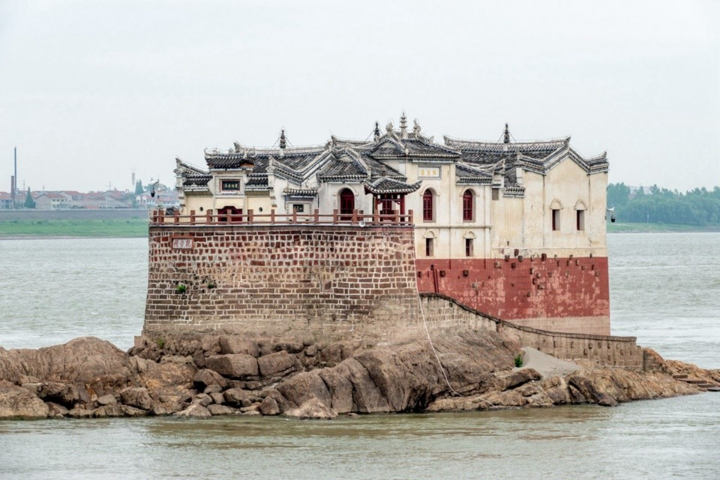 Ms. Hoang Tuyet Cam, specialist in the Cultural Management Department of the Ec Chau City Museum, said that the Quan Am Pavilion was built on a solid foundation, called the Long Ban stone block. Besides, in front of the temple there is a protective arc-shaped fence. The arc shape of the wall will regulate the flow and reduce the force of water, keeping the structure behind the wall under a much smaller gravity.
Ms. Hoang Tuyet Cam, specialist in the Cultural Management Department of the Ec Chau City Museum, said that the Quan Am Pavilion was built on a solid foundation, called the Long Ban stone block. Besides, in front of the temple there is a protective arc-shaped fence. The arc shape of the wall will regulate the flow and reduce the force of water, keeping the structure behind the wall under a much smaller gravity.
That's why for hundreds of years, the temple has still stood firm despite suffering countless floods. Especially the great flood in 1998 or 1954 on the Truong Giang River, about 30,000 people died. Even more terrible were the record floods that took place in 1911, killing about 100,000 people.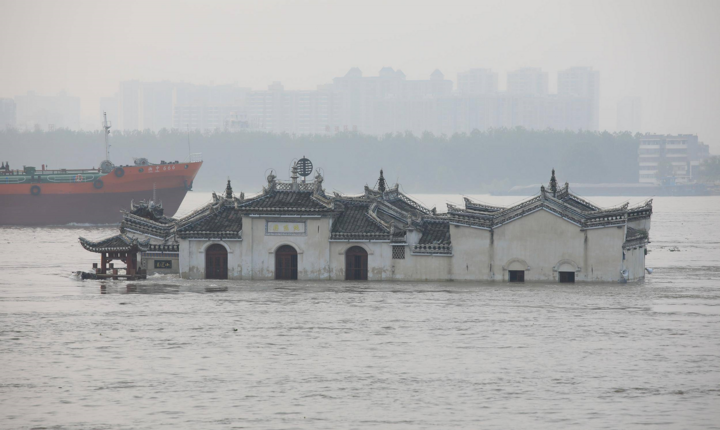 When floodwaters hit, the temple will be flooded, leaving only high-rise windows exposed to the outside. Only during the dry season and the river water level is low does the entire pagoda appear and stand tall in the middle of the river
When floodwaters hit, the temple will be flooded, leaving only high-rise windows exposed to the outside. Only during the dry season and the river water level is low does the entire pagoda appear and stand tall in the middle of the river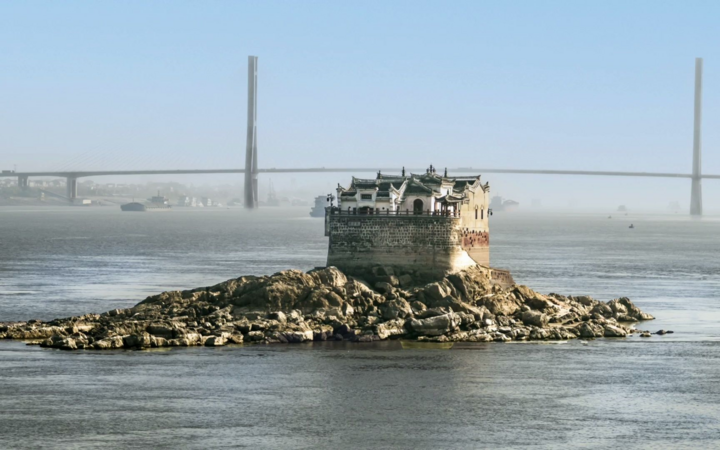 S
S
In 2006, Quan Am Pavilion was declared a key cultural heritage of China. However, because of its unique location, Quan Am Cac is not open to visitors. However, many people come to this place to admire this unique work.



































